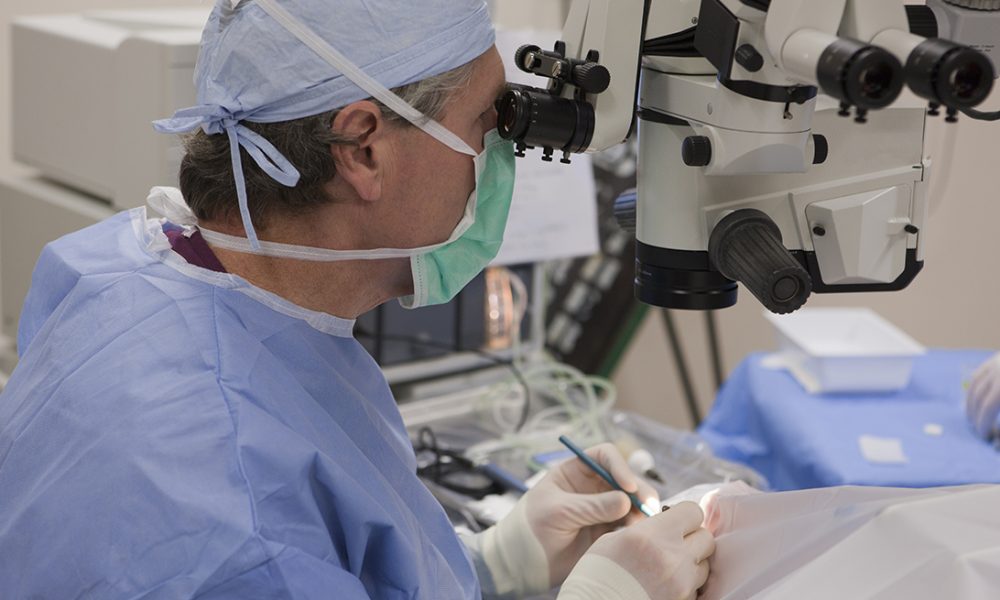Cataract surgery is a common procedure to restore vision impaired by cataracts, a condition where the eye’s natural lens becomes cloudy. Given the surgery’s success rate, many people who undergo it will likely need it in both eyes. However, one common question arises: How long should you wait between cataract surgeries on each eye?
Understanding Cataract Surgery
Before diving into the optimal timing, it’s important to understand what cataract surgery involves. The procedure entails removing the clouded lens and replacing it with an artificial intraocular lens (IOL). This surgery is generally quick, minimally invasive, and performed on an outpatient basis. Recovery time is also short with most people experiencing significant improvement in vision within a few days.

Why Stagger the Surgeries?
Some might wonder why both eyes aren’t operated on simultaneously. While it’s technically possible, most surgeons recommend staggering the surgeries for several reasons:
- Safety: Operating on one eye at a time minimizes the risk of bilateral complications.
- Assessment of Results: The surgeon can assess the outcome of the first surgery and make any necessary adjustments for the second.
- Patient Comfort: Staggered surgeries allow patients to retain vision in one eye while the other heals, making the recovery period less disruptive.
Typical Timing Between Surgeries
Immediate Sequential Bilateral Cataract Surgery (ISBCS)
In some cases, both eyes may be operated on the same day. This is known as Immediate Sequential Bilateral Cataract Surgery (ISBCS). While convenient, it’s not without risks. Potential complications could affect both eyes simultaneously leading to a greater impact on vision.
One to Two Weeks
The most common recommendation is to wait one to two weeks between surgeries This period allows the first eye to recover sufficiently enabling the patient and surgeon to evaluate the results before proceeding with the second surgery.
Three to Four Weeks
Some surgeons prefer to wait three to four weeks, especially if there are concerns about the first eye’s recovery or if the patient has other underlying health conditions. This extended period ensures that the first eye has fully healed and any issues can be addressed before the second procedure.
Longer Intervals
In certain cases, surgeons may recomend waiting even longer such as six weeks or more. This might be advised if the patient experiences complications or if they need additional time to adapt to the vision in the first eye.
Factors Influencing the Timing
Patient’s Overall Health
A patient’s general health can significantly impact the timing between surgeries. Those with chronic conditions like diabetes, hypertension, or autoimmune diseases may require more time between surgeries to ensure optimal healing.
Surgeon’s Preference
Surgeons may have their preferences based on their experience, the patient’s specific needs, and the type of intraocular lens used. Some surgeons might prefer a shorter interval if the first surgery went smoothly, while others may advocate for a longer gap.
Patient’s Comfort and Convenience
The patient’s lifestyle and comfort level also play a role. Some patients prefer a shorter interval to minimize the disruption to their daily lives, while others might opt for a longer gap to ensure they have fully adjusted to the new vision in the first eye
Type of Intraocular Lens (IOL)
The type of IOL implanted can also influence the timing. For instance, if a multifocal IOL is used the surgeon might recommend a longer interval to allow the patient time to adapt to the vision provided by the first eye.
Risks of Too Short or Too Long Intervals
Too Short
A too-short interval between surgeries might not give the first eye enough time to heal properly. This could lead to complications such as inflammation infection or improper healing, affecting the outcome of the second sugery.
Too Long
On the other hand, waiting too long between surgeries can also have drawbacks. The patient may struggle with a significant difference in vision between the two eyes, leading to discomfort or difficulties with daily activities.
Post-Surgery Care
Regardless of the timing, proper post-surgery care is crucial for a successful outcome. Patients should follow their surgeon’s instructions carefully, which may include using prescribed eye drop avoiding heavy lifting and protecting the eye from potential injury.

Monitoring Progress
Regular follow-up visits with the surgeon are essential to monitor the healing process and address any concens. These visits are an opportunity to discuss the timing for the second surgery and make any necessary adjustments based on the recovery of the first eye.
Adapting to New Vision
Patients should also be prepared for a period of adaptation as their brain adjusts to the new vision in each eye. This can vary depending on the type of IOL used and the patient’s visual needs.
Conclusion: Finding the Right Balance
The optimal timing between cataract surgeries on each eye varies depending on several factors, including the patient’s health, the surgeon’s experience, and the patient’s comfort level. While one to two weeks is the most commonly recommended interval, some patients may benefit from a shorter or longer gap.
Ultimately, the decision should be made in consultation with a qualified ophthalmologist who can tailor the timing to the individual patient’s needs. It’s also beneficial to explore various Health Ideas that can support the recovery process and overall eye health during this period.
In any case, the key to a successful outcome lies in careful planning, adherence to post-surgery care, and regular communication with the surgeon. With the right approach, cataract surgery can significantly improve a patient’s quality of life, restoring clear vision and enhancing daily activities.
This article provides a comprehensive overview of the considerations and factors that influence the timing between cataract surgeries on each eye.



No Comment! Be the first one.